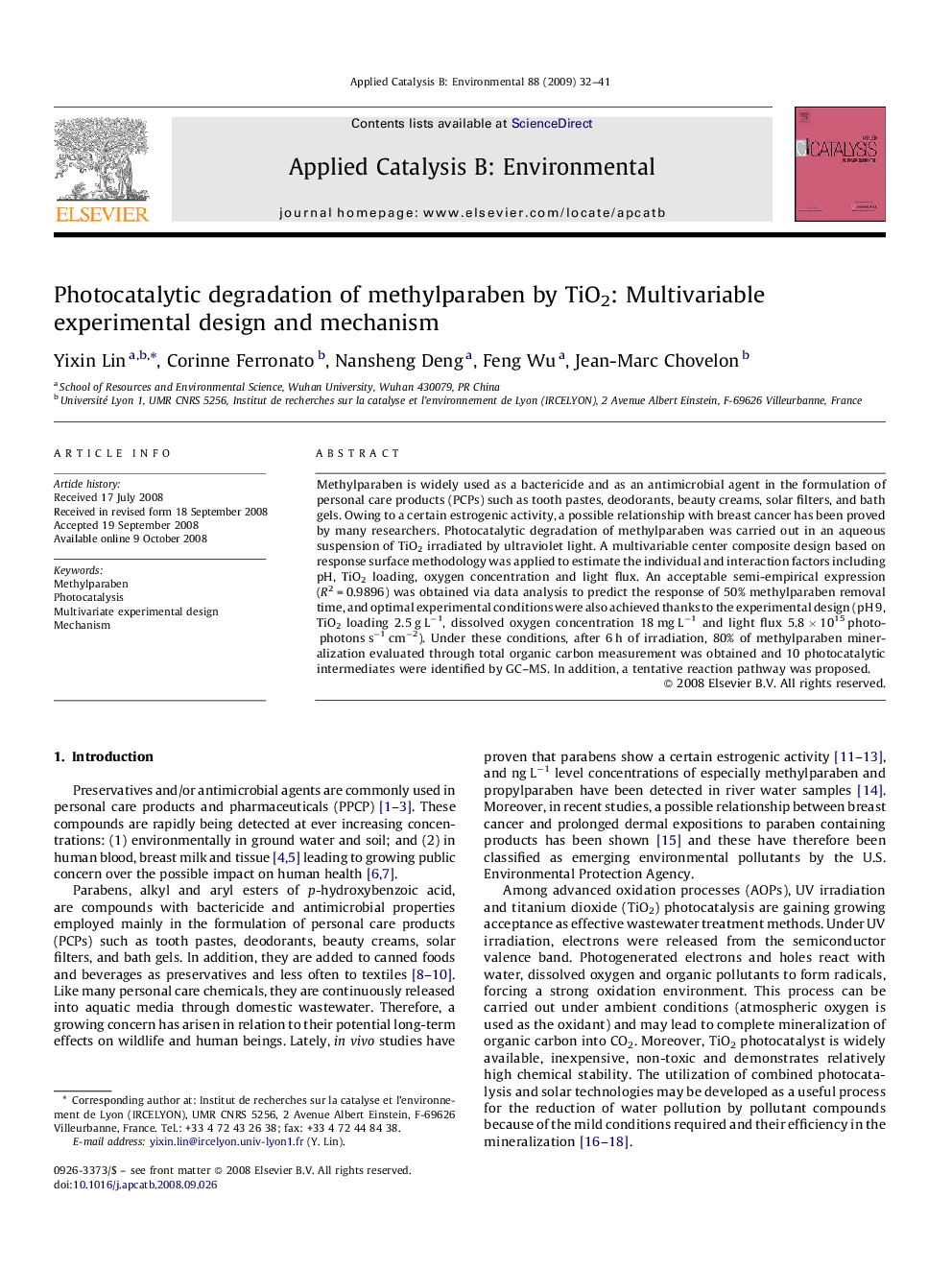| Article ID | Journal | Published Year | Pages | File Type |
|---|---|---|---|---|
| 48120 | Applied Catalysis B: Environmental | 2009 | 10 Pages |
Methylparaben is widely used as a bactericide and as an antimicrobial agent in the formulation of personal care products (PCPs) such as tooth pastes, deodorants, beauty creams, solar filters, and bath gels. Owing to a certain estrogenic activity, a possible relationship with breast cancer has been proved by many researchers. Photocatalytic degradation of methylparaben was carried out in an aqueous suspension of TiO2 irradiated by ultraviolet light. A multivariable center composite design based on response surface methodology was applied to estimate the individual and interaction factors including pH, TiO2 loading, oxygen concentration and light flux. An acceptable semi-empirical expression (R2 = 0.9896) was obtained via data analysis to predict the response of 50% methylparaben removal time, and optimal experimental conditions were also achieved thanks to the experimental design (pH 9, TiO2 loading 2.5 g L−1, dissolved oxygen concentration 18 mg L−1 and light flux 5.8 × 1015 photons s−1 cm−2). Under these conditions, after 6 h of irradiation, 80% of methylparaben mineralization evaluated through total organic carbon measurement was obtained and 10 photocatalytic intermediates were identified by GC–MS. In addition, a tentative reaction pathway was proposed.
